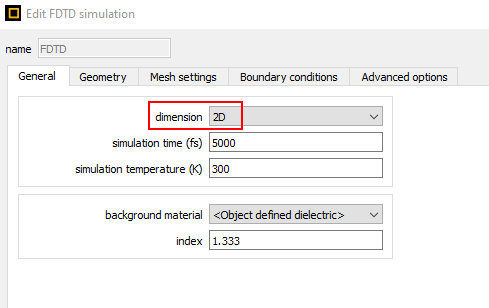-
-
December 1, 2021 at 5:28 pm
ur21581
SubscriberI've been using 3D FDTD for measuring reflectance of periodic material surface.
I think varFDTD simulation is quicker because it's in 2D, Is it possible to use it to measure reflectance, please?
Thank you!
December 2, 2021 at 8:35 pmKyle
Ansys Employee
Yes, varFDTD could be used for measuring reflectance but usually varFDTD is used for slab geometries like SOI waveguide devices. For reflection from a 2D periodic surface you could probably use 2D FDTD which would be just as fast as varFDTD:

For an example of this, see this Application Gallery example: https://support.lumerical.com/hc/en-us/articles/360042089353
When you use 2D FDTD you are essentially assuming that the geometry and source are infinite in the direction normal to the 2D simulation, so as long as this is true you can use 2D FDTD.
December 2, 2021 at 8:46 pmGuilin Sun
Ansys EmployeeI believe this is a duplicate post.
You can get reflection and transmission in varFDTD the same way as in FDTD and replied in the Chinese forum. Please do not duplicate the posts in the two forums.
VarFDTD is a simplified method, and works best if your device property falls in its application regime, eg, its original mode profile can be perfectly decomposed into to slab modes. if not, the result will have some errors. Its advantage is fast.
Viewing 2 reply threads- The topic ‘Measure Reflectance of Materials with varFDTD?’ is closed to new replies.
Ansys Innovation SpaceTrending discussionsTop Contributors-
3572
-
1193
-
1076
-
1063
-
952
Top Rated Tags© 2025 Copyright ANSYS, Inc. All rights reserved.
Ansys does not support the usage of unauthorized Ansys software. Please visit www.ansys.com to obtain an official distribution.
-


Ansys Assistant

Welcome to Ansys Assistant!
An AI-based virtual assistant for active Ansys Academic Customers. Please login using your university issued email address.
Hey there, you are quite inquisitive! You have hit your hourly question limit. Please retry after '10' minutes. For questions, please reach out to ansyslearn@ansys.com.
RETRY







